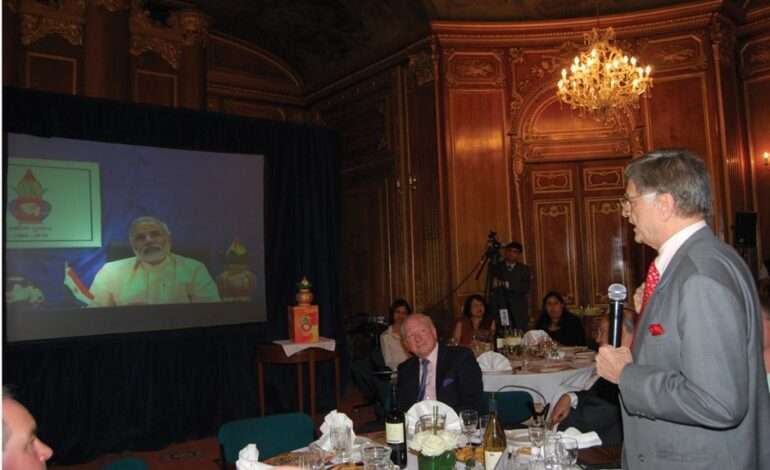
From grassroots to global: How PM Modi’s UK diaspora diplomacy evolved since 1993
As Prime Minister Narendra Modi landed in London, the resounding chants of ‘Modi Modi’ and ‘Vande Mataram’ reflected more than political enthusiasm—they marked a long-standing tradition of diaspora outreach that began well before he assumed national office.
Modi’s first informal visit to the UK in 1993, as BJP’s General Secretary in Gujarat, laid the seeds of his diaspora diplomacy. He connected with Indians across London, spoke to ethnic media, and mingled with communities in Croydon and Hastings—creating a people-first engagement model that would grow over decades.
In 1999, following the BJP’s national victory, Modi returned to the UK for a five-day visit. At a packed event in Neasden, he articulated the BJP’s civilizational and democratic vision, garnering attention from politicians like Lord Dholakia and Barry Gardiner.
By 2000, on his way to the UN Peace Summit, Modi met UK Deputy PM John Prescott and highlighted regional security and global terrorism—well before 9/11 reshaped global discourse.
As Gujarat Chief Minister, Modi’s 2003 visit to the UK came after the Bhuj earthquake. At Wembley, he thanked the diaspora for their unwavering support, famously redefining IT as “India Today” and BT as “Bharat Today.”
In 2011, Modi virtually addressed a golden jubilee celebration of Gujarat from Gandhinagar, emphasizing the global link through the Mahatma Mandir project—built with soil from 18,000 Indian villages and diaspora communities abroad.
Now as Prime Minister, Modi continues to see the Indian diaspora as vital partners in diplomacy and development, shaping India’s image as a global cultural and economic power.